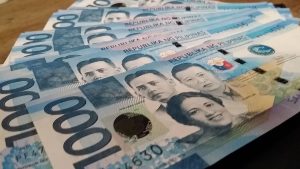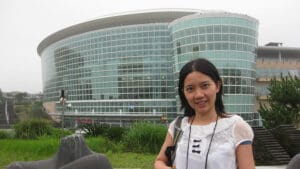By Bernadette Therese M. Gadon, Researcher
THE PHILIPPINES’ largest banks saw asset and loan growth ease in the second quarter, reflecting the impact of high interest rates and a slowing economy.
BusinessWorld’s latest quarterly banking report showed the combined assets of 45 universal and commercial banks (U/KBs) jumped by 8.76% year on year to P22.67 trillion in the April-to-June period from P20.84 trillion in the same period a year ago.
The pace was slower than the 11.72% growth in the second quarter last year, and the weakest since 8.38% expansion in the third quarter of 2022.
Total loans of the big banks expanded by 8.22% annually to P11.24 trillion in the second quarter. However, this was weaker than the 12.61% growth a year ago.
It also marked the slowest expansion of the big lenders’ total loans since the 6.21% annual increase in the first quarter of 2022.
The Philippines’ gross domestic product expanded by 4.3% in the second quarter, the slowest in over two years, as the growth was partially tempered by high inflation and the lagged effects of interest rate hikes.
The Bangko Sentral ng Pilipinas has raised borrowing costs by 425 basis points (bps) from May 2022 to March 2023, bringing the key policy rate to a near 16-year high.
In the second quarter, the nonperforming loan (NPL) ratio improved to 3.58% from 3.75% a year ago.
Nonperforming asset (NPA) ratio, or the share of NPLs and foreclosed properties to total assets, eased to 1.07% from 1.17% in the same quarter a year ago.
Relative to total assets, foreclosed real and other properties stood at 0.27% in the April-to-June period, slightly lower than 0.28% posted last year.
Total loan loss reserves expanded by 9.01% annually to P399.13 billion during the April-to-June period.
The U/KBs median capital adequacy ratio (CAR) — the capacity to absorb losses from risk-weighted assets — stood at 21.75%. This was better than the median 20.91% in the second quarter of last year.
This was also the highest CAR in eight quarters since the 22.34% logged in the second quarter of 2021.
The banks’ CAR remained well above the Bangko Sentral ng Pilipinas’ 10% minimum requirement and the 8% international minimum standard under the Basel III framework.
The median return on equity (RoE), which is an indicator of profitability, rose to 7.91% in the April-to-June period from 5.56% in the second quarter of 2022. However, this was smaller than the median RoE of 8.79% in the first quarter.
The RoE, the ratio of net profit to average capital, measures the amount that shareholders make on every peso they invest in a company.
By assets, BDO Unibank, Inc. (BDO) remained the biggest bank with P4.08 trillion, followed by Land Bank of the Philippines (LANDBANK) with P3.04 trillion, and Metropolitan Bank & Trust Co. (Metrobank) with P2.93 trillion.
BDO also had the most deposits with P3.29 trillion, followed by LANDBANK with P2.7 trillion, and Metrobank with P2.25 trillion.
During the second quarter, the Sy-led bank issued P2.58 trillion worth of loans, followed by the Bank of the Philippine Islands and Metrobank with P1.71 trillion and P1.36 trillion, respectively.
Among banks with at least P100 billion assets, Union Bank of the Philippines (UnionBank) posted the fastest year-on-year asset growth of 26.87%, followed by China Banking Corp. (25.53%), and Rizal Commercial Banking Corp. (17.68%).
In the April-to-June period, Standard Chartered Bank had the fastest loan growth at 68.92%. UnionBank followed with 43.38%, and East West Banking Corp. with 22.44%.
BusinessWorld Research has been tracking the financial performance of the country’s large banks on a quarterly basis since the late 1980s using banks’ published statements.
The full version of BusinessWorld’s quarterly banking report will soon be available for download at https://bworld-x.com/product-category/bw-in-depth-banking-report/.






